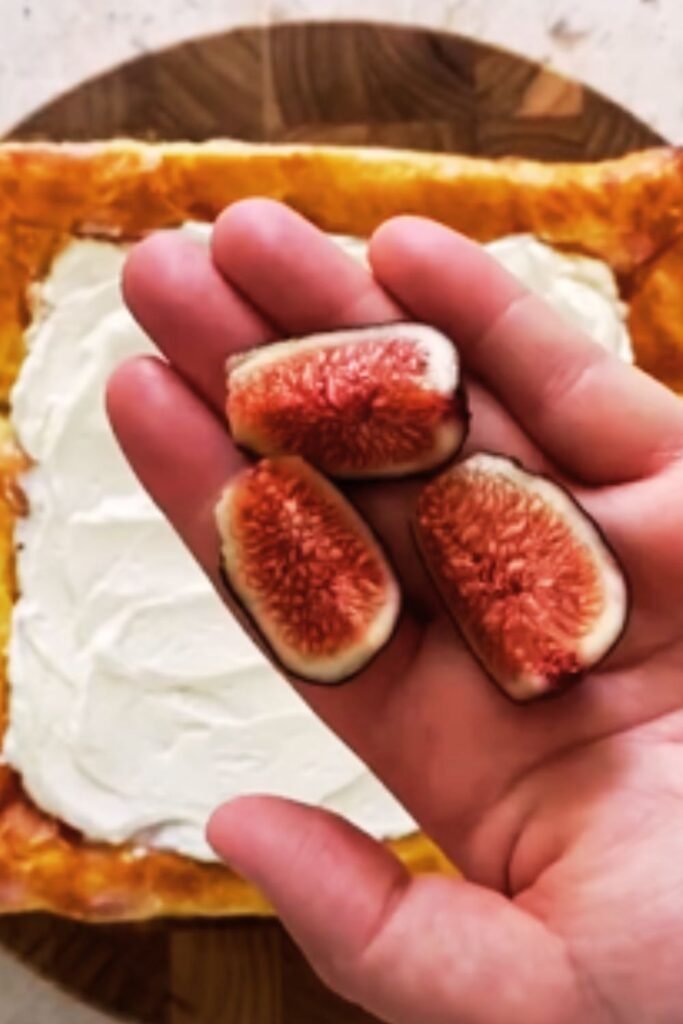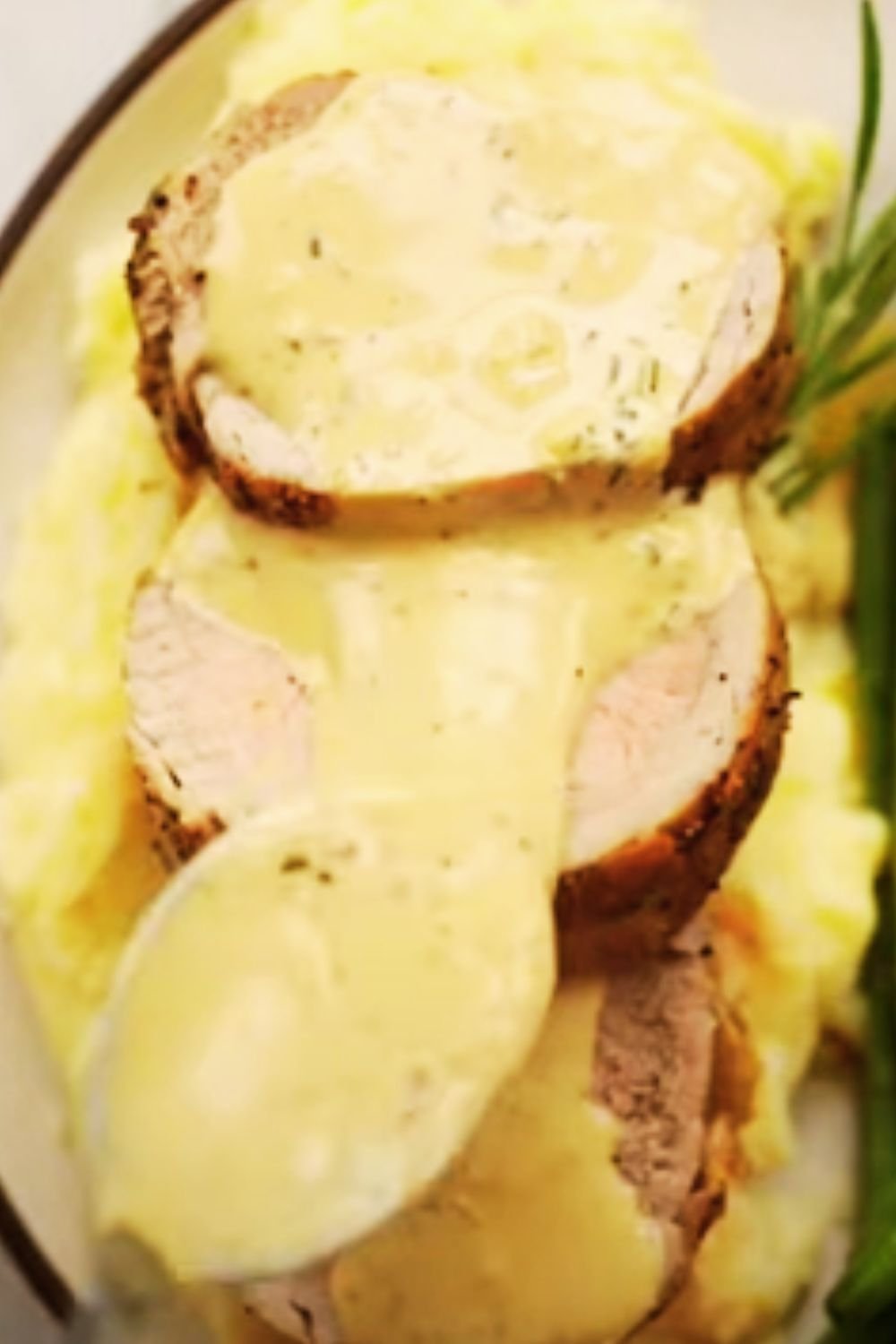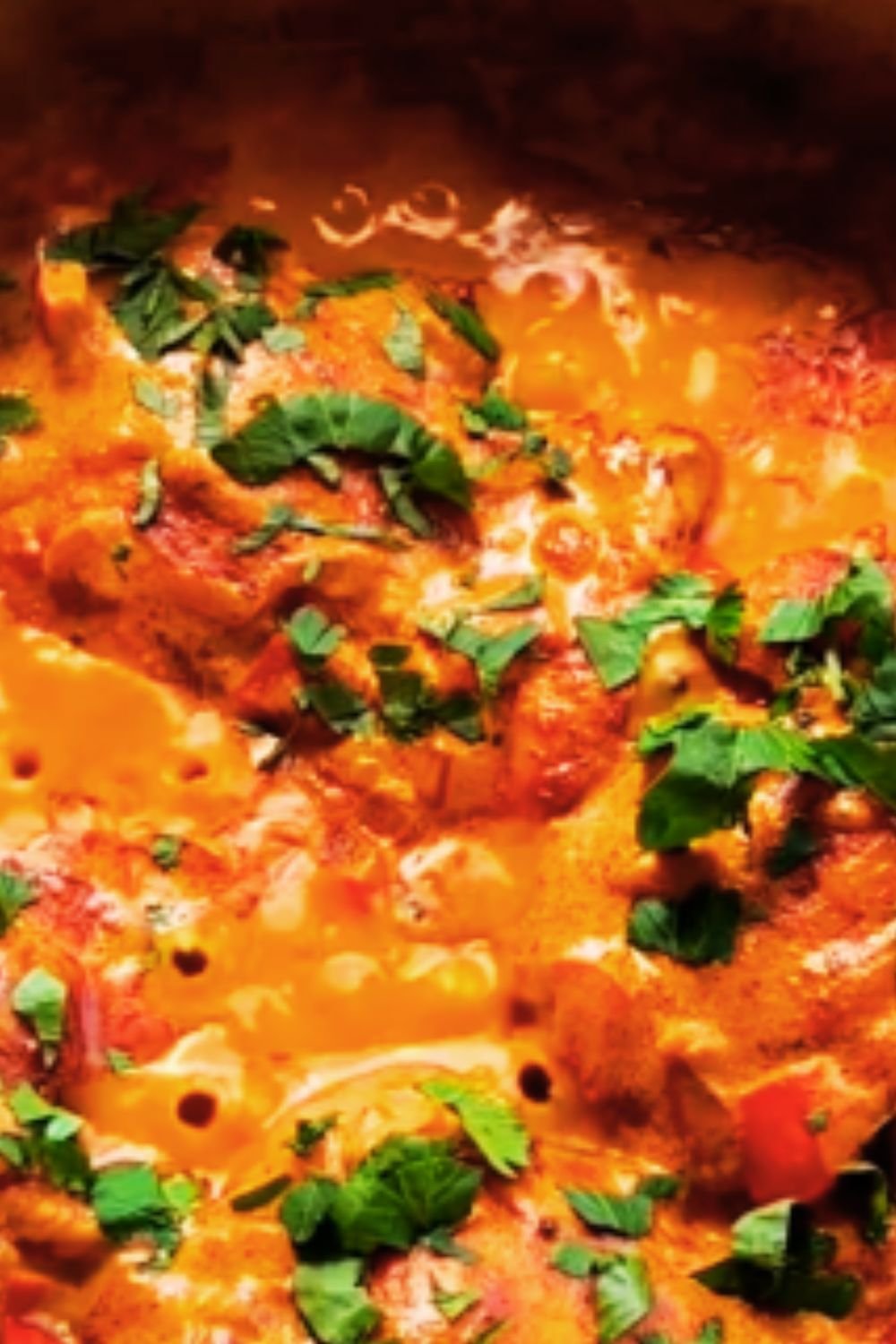There’s something magical about the combination of sweet figs and tangy goat cheese nestled in buttery puff pastry. I discovered this pairing years ago at a small café in Provence, and I’ve been perfecting my own version ever since. These tarts strike the perfect balance between rustic simplicity and elegant presentation, making them ideal for everything from casual brunches to sophisticated dinner parties.
Today, I’m sharing my time-tested recipe for Goat Cheese and Fig Puff Pastry Tarts that never fails to impress guests while being surprisingly simple to prepare. The contrast of textures and flavors creates a memorable bite that will have everyone asking for your secret.
What Makes These Tarts Special?
These aren’t your ordinary appetizers. The combination of flaky puff pastry, creamy goat cheese, and caramelized figs creates a perfect harmony of flavors and textures that’s truly unforgettable. The honey drizzle and fresh thyme add aromatic complexity that elevates these tarts to restaurant quality.
I particularly love how versatile these tarts can be. You can serve them as elegant appetizers cut into small portions, enjoy them as a light lunch alongside a simple green salad, or even present them as a sophisticated dessert with a drizzle of additional honey.
Ingredients You’ll Need
For this recipe, quality ingredients make all the difference. Here’s what you’ll need to gather:
For the Tarts:
- 2 sheets of all-butter puff pastry (approximately 14 oz or 400g), thawed if frozen
- 8 oz (225g) soft goat cheese (chèvre)
- 12-14 fresh figs, sliced into quarters or sixths depending on size
- 3 tablespoons honey, plus extra for drizzling
- 2 tablespoons fresh thyme leaves, plus extra sprigs for garnish
- 1 egg, beaten (for egg wash)
- Zest of 1 lemon
- 1/4 teaspoon freshly ground black pepper
- 1/4 teaspoon sea salt, plus extra for finishing
For the Optional Balsamic Reduction:
- 1 cup (240ml) good quality balsamic vinegar
- 2 tablespoons honey
Kitchen Equipment
Having the right tools on hand will make this recipe even easier:
- Baking sheets
- Parchment paper
- Pastry brush
- Sharp knife
- Cutting board
- Small mixing bowl
- Small saucepan (if making balsamic reduction)
- Wire cooling rack
Step-by-Step Preparation
Preparing the Puff Pastry Base
- Preheat your oven to 400°F (200°C) and line two baking sheets with parchment paper.
- On a lightly floured surface, gently unfold your puff pastry sheets. Using a sharp knife, cut each sheet into 4 equal squares or rectangles, giving you 8 tart bases in total.
- Transfer the pastry pieces to your prepared baking sheets, leaving about 2 inches between each piece as they will expand during baking.
- With a sharp knife, score a border approximately 1/2 inch from the edge of each pastry piece, creating a frame. Be careful not to cut all the way through the pastry.
- Using a fork, prick the inner rectangle of each pastry piece multiple times. This prevents the center from puffing up too much while allowing the edges to rise and form a natural border.
- Brush the edges of each pastry with beaten egg wash for a golden finish.
Creating the Goat Cheese Mixture
- In a small mixing bowl, combine the goat cheese, 1 tablespoon of honey, lemon zest, 1 tablespoon of thyme leaves, and the black pepper.
- Mix thoroughly until smooth and well blended. The honey helps make the mixture easier to spread.
- Carefully spread the goat cheese mixture onto the inner rectangle of each pastry piece, staying within the scored border.
Arranging and Baking the Tarts
- Arrange the sliced figs decoratively on top of the goat cheese mixture. I like to slightly overlap them in a circular pattern or rows, depending on the shape of your tarts.
- Drizzle each tart with a small amount of honey (about 1/4 teaspoon per tart).
- Sprinkle the remaining thyme leaves over the figs and add a light sprinkle of sea salt.
- Bake in the preheated oven for 20-25 minutes, or until the pastry is puffed and golden brown around the edges.
- Remove from the oven and allow to cool slightly on the baking sheets for 5 minutes before transferring to a wire rack.

Optional Balsamic Reduction
While the tarts are baking, you can prepare a balsamic reduction to serve alongside:
- In a small saucepan, combine the balsamic vinegar and honey.
- Bring to a gentle boil over medium heat, then reduce to a simmer.
- Cook, stirring occasionally, until the mixture has reduced by about half and is thick enough to coat the back of a spoon (approximately 15-20 minutes).
- Remove from heat and allow to cool. The reduction will continue to thicken as it cools.
Serving Suggestions
These versatile tarts can be served in multiple ways:
- Warm Appetizers: Serve them warm from the oven as elegant starters.
- Light Meal: Pair with a simple arugula salad dressed with lemon juice and olive oil for a delightful lunch.
- Brunch Star: Cut into smaller pieces for a stunning addition to your brunch spread.
- Cheese Course Alternative: Serve as a sophisticated alternative to a traditional cheese course.
For the perfect presentation, I recommend:
- Drizzle each tart with a little extra honey just before serving.
- Add a few drops of balsamic reduction around the plate if you’ve made it.
- Garnish with additional fresh thyme sprigs and a light sprinkle of flaky sea salt.
- For a special touch, add some toasted pine nuts or chopped pistachios for added texture.

Seasonal Variations
One of the things I love most about this recipe is how easily it can be adapted throughout the year:
| Season | Fig Variety | Cheese Alternative | Herb Variation | Additional Flavors |
|---|---|---|---|---|
| Summer | Black Mission or Brown Turkey figs | Traditional goat cheese | Fresh thyme | Lavender honey |
| Fall | Black Mission or Kadota figs | Goat cheese with herbs | Rosemary | Maple syrup instead of honey |
| Winter | Dried figs (rehydrated) | Aged goat cheese | Dried herbs | Orange zest and honey |
| Spring | Early Black Mission figs | Whipped goat cheese | Mint or basil | Lemon infused honey |
Storage and Make-Ahead Tips
While these tarts are best enjoyed fresh from the oven, there are ways to prepare components ahead of time:
- Puff Pastry Prep: You can cut and score the pastry up to 24 hours in advance. Keep covered in the refrigerator.
- Goat Cheese Mixture: Can be prepared up to 2 days ahead and stored in an airtight container in the refrigerator.
- Assembled but Unbaked: Tarts can be assembled (without the egg wash) and refrigerated for up to 4 hours before baking. Apply egg wash just before baking.
- Leftover Storage: Store any leftover baked tarts in an airtight container in the refrigerator for up to 2 days. Reheat in a 350°F (175°C) oven for 5-7 minutes to recrisp the pastry.
Nutritional Information
Each tart provides:
| Nutrient | Amount per Serving |
|---|---|
| Calories | Approximately 320 |
| Protein | 9g |
| Carbohydrates | 32g |
| Fat | 18g |
| Fiber | 3g |
| Sugar | 14g |
| Sodium | 290mg |
Note: Values are approximate and will vary based on exact ingredients used.
Common Troubleshooting Tips
Even with a relatively simple recipe, things can sometimes go awry. Here are solutions to common issues:
Soggy Pastry Bottom
- Ensure you’ve properly pricked the base with a fork
- Consider blind baking the pastry bases for 5-7 minutes before adding toppings
- Make sure your oven is fully preheated
Goat Cheese Too Crumbly to Spread
- Allow it to come to room temperature before mixing
- Add an extra teaspoon of honey to help bind it
- Mix with a small amount (1-2 teaspoons) of cream cheese for easier spreading
Figs Releasing Too Much Moisture
- Use slightly underripe figs which have less moisture
- Pat the fig slices with paper towels before arranging
- Sprinkle a thin layer of ground almonds or breadcrumbs on top of the goat cheese before adding figs

The History Behind Figs and Goat Cheese
The pairing of figs and goat cheese has ancient roots. Figs are among the oldest cultivated fruits, with evidence of their cultivation dating back to 9400-9200 BCE in the Jordan Valley. Goat cheese production has been documented as early as 5000 BCE.
This classic Mediterranean pairing represents the agricultural heritage of the region, where both figs and goats thrived in the warm, dry climate. The sweet, honeyed flavor of ripe figs provides the perfect counterpoint to the tangy, earthy notes of goat cheese – a combination that has stood the test of time for good reason.
In French cuisine, this pairing is particularly celebrated, often appearing in tartines, salads, and as part of cheese courses. My recipe draws inspiration from these traditions while adding the buttery canvas of puff pastry for a more substantial offering.
Chef’s Notes and Tips
After making these tarts countless times, I’ve discovered some valuable insights:
- Temperature Matters: Room temperature goat cheese is much easier to mix and spread than cold.
- Fig Selection: Look for figs that yield slightly to gentle pressure – too firm and they’ll lack sweetness, too soft and they’ll release too much moisture during baking.
- Pastry Handling: Keep puff pastry cold until ready to use. If it becomes too warm and soft, return it to the refrigerator for 15 minutes before continuing.
- Even Baking: Rotate your baking sheets halfway through baking time to ensure even browning.
- Make it Mini: For cocktail party versions, cut the pastry into smaller squares or use a round cutter for bite-sized tarts.
- Sweet or Savory: These tarts sit beautifully at the intersection of sweet and savory – lean into either direction by adjusting the honey quantity.
Questions and Answers
Can I use dried figs instead of fresh? Yes! Dried figs can work wonderfully, especially outside of fig season. To prepare them, slice and soak in warm water or apple juice for about 30 minutes to rehydrate, then pat dry before using. They’ll provide a more intense, concentrated sweetness than fresh figs.
Is there a substitute for goat cheese if I don’t like the flavor? Absolutely. While goat cheese provides that classic tangy flavor, you can substitute with ricotta mixed with a bit of lemon zest for freshness, or a mild cream cheese. Mascarpone is another excellent alternative for a milder, creamier option. Each will change the character of the dish but will still be delicious.
Can I make these tarts vegan? Yes, these can be adapted for a vegan diet. Use a vegan puff pastry (many store-bought versions are already vegan), and replace the goat cheese with a plant-based alternative like almond ricotta or cashew cream cheese. Skip the egg wash and instead brush the pastry with a little plant milk or olive oil for color.
How do I know when figs are perfectly ripe? The perfect fig should be plump and yield slightly to gentle pressure, like a ripe peach. They should smell sweet and have a slight bend at the stem. Avoid figs with sour smells or any signs of mold. Different varieties will show different colors when ripe, but all should feel soft but not mushy.
Can I freeze these tarts? You can freeze these tarts either before or after baking. To freeze unbaked tarts, assemble them without the egg wash, freeze until solid, then wrap well. Bake from frozen, adding a few extra minutes to the baking time and applying egg wash just before baking. For baked tarts, freeze after cooling completely, then reheat in a 350°F oven until warmed through and crisp.
What’s the best type of honey to use? I recommend using a mild, floral honey like acacia or orange blossom that won’t overpower the delicate flavors. However, if you want to make a bolder statement, a stronger flavored honey like chestnut or buckwheat can create an interesting contrast. Specialty honeys infused with lavender or thyme can also complement the flavors beautifully.
Final Thoughts
These Goat Cheese and Fig Puff Pastry Tarts represent the beautiful simplicity of Mediterranean-inspired cooking. With just a handful of quality ingredients and some basic techniques, you can create something truly spectacular that honors the natural flavors of each component.
I hope you enjoy making and sharing these tarts as much as I do. There’s something deeply satisfying about serving food that not only tastes incredible but also looks like a work of art. The vibrant colors of the figs, the rustic golden pastry, and the speckles of fresh herbs create a visual feast that promises the delicious experience to come.
Whether you’re making these for a special occasion or simply to elevate an ordinary day, they’re sure to bring a moment of genuine pleasure to anyone lucky enough to taste them.


